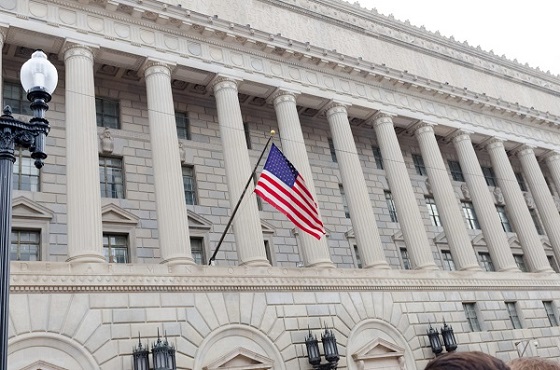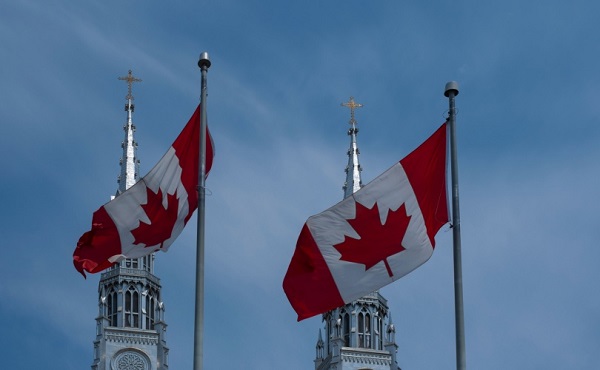Business
Canada’s chief actuary fails to estimate Alberta’s share of CPP assets

From the Fraser Institute
By Tegan Hill
Each Albertan would save up to $2,850 in 2027—the first year of the hypothetical Alberta plan—while retaining the same benefits as the CPP. Meanwhile, the basic CPP contribution rate for the rest of Canada would increase to 10.36 per cent.
Despite a new report from Canada’s chief actuary about Alberta’s potential plan to leave the Canada Pension Plan (CPP) and start its own separate provincial pension plan, Albertans still don’t have an official estimate from Ottawa about Alberta’s share of CPP assets.
The actuary analyzed how the division of assets might be calculated, but did not provide specific numbers.
Yet according to a report commissioned by the Smith government and released last year, Alberta’s share of CPP assets totalled an estimated $334 billion—more than half the value of total CPP assets. Based on that number, if Alberta left the CPP, Albertans would pay a contribution rate of 5.91 per cent for a new CPP-like provincial program (a significant reduction from the current 9.9 per cent CPP rate deducted from their paycheques). As a result, each Albertan would save up to $2,850 in 2027—the first year of the hypothetical Alberta plan—while retaining the same benefits as the CPP. Meanwhile, the basic CPP contribution rate for the rest of Canada would increase to 10.36 per cent.
Why would Albertans pay less under a provincial plan?
Because Alberta has a comparatively younger population (i.e. more workers vs. retirees), higher average incomes and higher levels of employment (i.e. higher level of premiums paid into the fund). As such, Albertans collectively pay significantly more into the CPP than retirees in Alberta receive in benefits. Simply put, under a provincial plan, Albertans would pay less and receive the same benefits.
Some critics, however, dispute the estimated share of Alberta’s CPP assets (again, $334 billion—more than half the value of total CPP assets) in the Smith government’s report, and claim the estimate understates the report’s contribution rate for a new Alberta pension plan and overestimates the new CPP rate without Alberta.
Which takes us back to the new report from Canada’s chief actuary, which was supposed to provide its own estimate of Alberta’s share of the assets. Unfortunately, it did not.
But there are other rate estimates out there, based on various assumptions. According to a 2019 analysis published by the Fraser Institute, the contribution rate for a new separate CPP-like program in Alberta could be as low as 5.85 per cent, while AIMCo’s 2019 estimate was 7.21 per cent (and possibly as low as 6.85 per cent). And University of Calgary economist Trevor Tombe has pegged Alberta’s hypothetical rate at 8.2 per cent.
While the actuary in Ottawa failed to provide any numbers, one thing’s for certain—according to the available estimates, Albertans would pay a lower contribution rate in a separate provincial pension plan while CPP contributions for the rest of Canada (excluding Quebec) would likely increase.
Business
Taxpayers release Naughty and Nice List

From the Canadian Taxpayers Federation
CBC President and CEO Catherine Tait tops the Taxpayer Naughty List for dishing out executive bonuses that cost more than the average Canadian worker makes in a year.
“Santa doesn’t like it when girls and boys are greedy, and forcing struggling taxpayers to pay for Santa-sized executive bonuses is as greedy as it gets,” said Franco Terrazzano, CTF Federal Director. “And Canadian diplomats are on the Naughty List too because Santa likes eggnog as much as the next guy, but even he knows Global Affairs Canada is sipping on a little too much Christmas spirit.
“For billing taxpayers $51,000 a month on booze, Global Affairs Canada bureaucrats find themselves on Santa’s Naughty List.”
Ontario Premier Doug Ford made the Taxpayer Naughty List for extending political welfare after promising to scrap it. And for breaking his promise to cap property tax increases, Winnipeg Mayor Scott Gillingham is also on the Naughty List.
For resigning over wasteful spending and saving taxpayers’ money in the process, former Kensington mayor Rowan Caseley tops the Taxpayer Nice List. Newfoundland and Labrador Premier Andrew Furey also made the Nice List for cutting gas taxes and fighting the federal carbon tax.
“Santa is getting hammered by carbon tax bills on his reindeer barn, so Prime Minister Justin Trudeau lands on the Naughty List for making everything more expensive with his carbon tax,” said Kris Sims, CTF Alberta Director. “Alberta Premier Danielle Smith and Saskatchewan Premier Scott Moe made Santa’s good books for taking action against Trudeau’s carbon tax.”
You can find the entire 2024 Taxpayer Naughty and Nice List here.
Taxpayer Naughty List:
- CBC President & CEO Catherine Tait
- Prime Minister Justin Trudeau
- Ontario Premier Doug Ford
- Global Affairs Canada
- Winnipeg Mayor Scott Gillingham
- The entire federal bureaucracy
Taxpayer Nice List:
- Former Kensington Mayor Rowan Caseley
- Saskatchewan Premier Scott Moe
- Newfoundland and Labrador Premier Andrew Furey
- Alberta Premier Danielle Smith
- Parliamentary Budget Officer Yves Giroux
Business
Senator Introduces Bill To Send One-Third Of Federal Workforce Packing Out Of DC


From the Daily Caller News Foundation
By Harold Hutchison
Republican Sen. Joni Ernst of Iowa introduced legislation Thursday that would send nearly a third of the federal employees out of the Washington, D.C. metropolitan area.
The bill, known as the ‘Decentralizing and Reorganizing Agency Infrastructure Nation-wide To Harness Efficient Services, Workforce Administration, and Management Practices (DRAIN THE SWAMP) Act, is far more sweeping than the “Returning SBA to Main Street Act,” legislation introduced by Ernst Dec. 12 that focused on the Small Business Administration (SBA). Ernst told the Daily Caller News Foundation that the move would improve services for Americans while saving billions of taxpayer dollars.
“Federal employees don’t want to work in Washington, so why should taxpayers be footing the bill? By relocating at least 30% of the federal workforce, we will save billions and improve service for veterans, small businesses, and all Americans. The bureaucrat laptop class has been out of the office for far too long, and it is time to get them back to work for the American people,” Ernst told the Daily Caller News Foundation.
The legislation requires most government agencies to “promote geographic diversity, including consideration of rural markets” when relocating employees from the D.C. area and to “ensure adequate staffing throughout the regions of the Administration, to promote in-person customer service.” Exceptions are made for fewer than 10 agencies, most involved in national security, like the Department of Defense, Central Intelligence Agency, the Department of Homeland Security, and the Department of Energy.
The legislation also requires most federal agencies to reduce the total office space in their Washington, D.C., headquarters by at least 30% in a two-year timeframe following the bill’s enactment.
Ernst issued a 60-page report Dec. 5 that covered findings from Ernst’s investigations into telework since she sent an August 2023 letter to 24 government agencies requesting a review of the issues involved with telecommuting.
Previous investigations by Ernst into telecommuting by federal employees detailed the issues that telework created involving locality pay, an adjustment to the basic pay of civilian employees in the federal government intended to make sure that federal employees have comparable compensation to private-sector counterparts in a given area of the country. In the August 2023 letter sent to 24 government agencies requesting a review of the issues involved with telecommuting, Ernst cited a media account of a VA employee who attended a staff meeting while taking a bubble bath.
Ernst issued a 60-page report Dec. 5 that covered findings from her investigations into the issues involved with telecommuting by federal employees. Those findings detailed issues that telework created involving locality pay, an adjustment to the basic pay of civilian employees in the federal government intended to make sure that federal employees have comparable compensation to private-sector counterparts in a given area of the country.
In one case cited by the senator on multiple occasions, a United States Agency for International Development (USAID) employee received locality pay for the Washington, D.C., area despite living full-time in Florida. The employee in question retired before the conclusion of the probe, according to a summary posted on the USAID inspector general’s site April 30.
Ernst’s legislation mandates that affected federal agencies “ensure that the rate of pay of the employee is calculated based on the pay locality for the permanent duty station of the employee.”
The Office of Management and Budget did not immediately respond to a request for comment from the DCNF.
-

 Alberta1 day ago
Alberta1 day agoFederal taxes increasing for Albertans in 2025: Report
-

 COVID-191 day ago
COVID-191 day agoChildren who got COVID shots more likely to catch the virus than those who didn’t, study finds
-

 Artificial Intelligence1 day ago
Artificial Intelligence1 day agoWorld’s largest AI chip builder Taiwan wants Canadian LNG
-

 Alberta2 days ago
Alberta2 days agoFraser Institute: Time to fix health care in Alberta
-

 Business1 day ago
Business1 day agoThe gun ban and buyback still isn’t worth it for taxpayers
-

 MAiD2 hours ago
MAiD2 hours agoNearly half of non-terminally ill Canadians who choose euthanasia say they are lonely
-

 Business3 hours ago
Business3 hours agoSenator Introduces Bill To Send One-Third Of Federal Workforce Packing Out Of DC
-

 National1 day ago
National1 day agoCanadian gov’t budget report targets charitable status of pro-life groups, churches







